
Found by Inspirationde
wskentwe could all learn a thing or two from this.
wskentmuch needed fuel.
wskenti don't know what this is, but it is damn catchy.

Not only is the song catchy, but this delightful homage by Pogo has fantastic production values, to boot! Warning: you may be singing this the rest of the day. (more…)
wskenti feel a greater sense of urgency now in what a read and how i read. these points (some more than others) were like glasses and i see theories, ideas, and underlying concepts so sharply now. exploit these please.
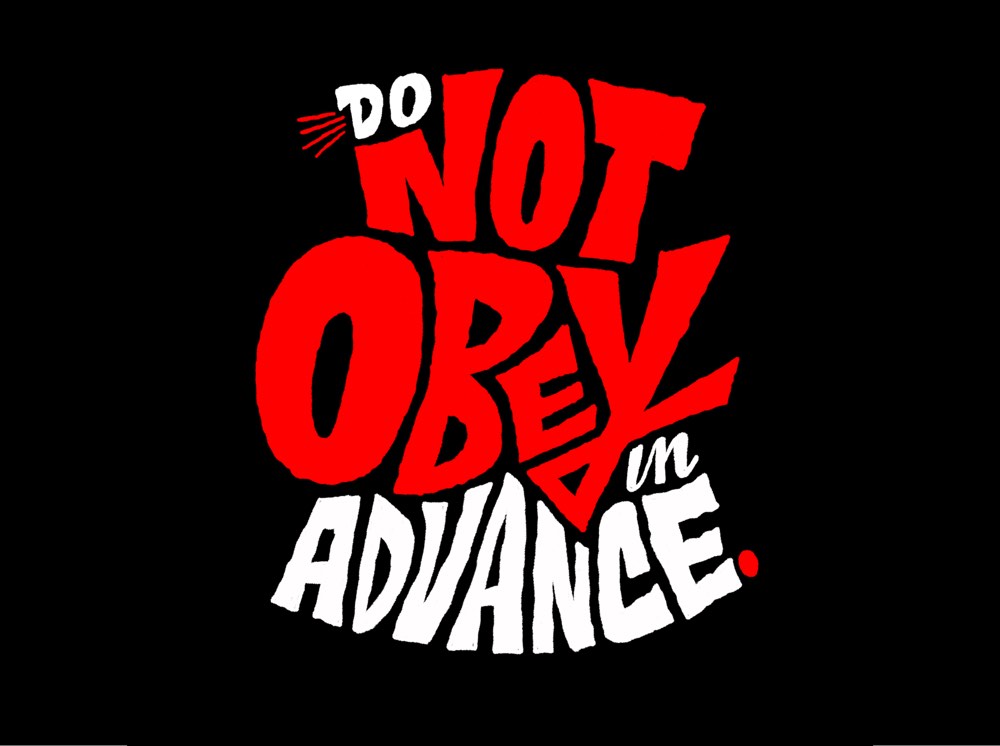
Yale history professor Timothy Snyder took to Facebook to share some lessons from 20th century about how to protect our liberal democracy from fascism and authoritarianism. Snyder has given his permission to republish the list, so I’ve reproduced it in its entirety here in case something happens to the original.
Americans are no wiser than the Europeans who saw democracy yield to fascism, Nazism, or communism. Our one advantage is that we might learn from their experience. Now is a good time to do so. Here are twenty lessons from the twentieth century, adapted to the circumstances of today.
1. Do not obey in advance. Much of the power of authoritarianism is freely given. In times like these, individuals think ahead about what a more repressive government will want, and then start to do it without being asked. You’ve already done this, haven’t you? Stop. Anticipatory obedience teaches authorities what is possible and accelerates unfreedom.
2. Defend an institution. Follow the courts or the media, or a court or a newspaper. Do not speak of “our institutions” unless you are making them yours by acting on their behalf. Institutions don’t protect themselves. They go down like dominoes unless each is defended from the beginning.
3. Recall professional ethics. When the leaders of state set a negative example, professional commitments to just practice become much more important. It is hard to break a rule-of-law state without lawyers, and it is hard to have show trials without judges.
4. When listening to politicians, distinguish certain words. Look out for the expansive use of “terrorism” and “extremism.” Be alive to the fatal notions of “exception” and “emergency.” Be angry about the treacherous use of patriotic vocabulary.
5. Be calm when the unthinkable arrives. When the terrorist attack comes, remember that all authoritarians at all times either await or plan such events in order to consolidate power. Think of the Reichstag fire. The sudden disaster that requires the end of the balance of power, the end of opposition parties, and so on, is the oldest trick in the Hitlerian book. Don’t fall for it.
6. Be kind to our language. Avoid pronouncing the phrases everyone else does. Think up your own way of speaking, even if only to convey that thing you think everyone is saying. (Don’t use the internet before bed. Charge your gadgets away from your bedroom, and read.) What to read? Perhaps “The Power of the Powerless” by V’aclav Havel, 1984 by George Orwell, The Captive Mind by Czeslaw Milosz, The Rebel by Albert Camus, The Origins of Totalitarianism by Hannah Arendt, or Nothing is True and Everything is Possible by Peter Pomerantsev.
7. Stand out. Someone has to. It is easy, in words and deeds, to follow along. It can feel strange to do or say something different. But without that unease, there is no freedom. And the moment you set an example, the spell of the status quo is broken, and others will follow.
8. Believe in truth. To abandon facts is to abandon freedom. If nothing is true, then no one can criticize power, because there is no basis upon which to do so. If nothing is true, then all is spectacle. The biggest wallet pays for the most blinding lights.
9. Investigate. Figure things out for yourself. Spend more time with long articles. Subsidize investigative journalism by subscribing to print media. Realize that some of what is on your screen is there to harm you. Bookmark PropOrNot or other sites that investigate foreign propaganda pushes.
10. Practice corporeal politics. Power wants your body softening in your chair and your emotions dissipating on the screen. Get outside. Put your body in unfamiliar places with unfamiliar people. Make new friends and march with them.
11. Make eye contact and small talk. This is not just polite. It is a way to stay in touch with your surroundings, break down unnecessary social barriers, and come to understand whom you should and should not trust. If we enter a culture of denunciation, you will want to know the psychological landscape of your daily life.
12. Take responsibility for the face of the world. Notice the swastikas and the other signs of hate. Do not look away and do not get used to them. Remove them yourself and set an example for others to do so.
13. Hinder the one-party state. The parties that took over states were once something else. They exploited a historical moment to make political life impossible for their rivals. Vote in local and state elections while you can.
14. Give regularly to good causes, if you can. Pick a charity and set up autopay. Then you will know that you have made a free choice that is supporting civil society helping others doing something good.
15. Establish a private life. Nastier rulers will use what they know about you to push you around. Scrub your computer of malware. Remember that email is skywriting. Consider using alternative forms of the internet, or simply using it less. Have personal exchanges in person. For the same reason, resolve any legal trouble. Authoritarianism works as a blackmail state, looking for the hook on which to hang you. Try not to have too many hooks.
16. Learn from others in other countries. Keep up your friendships abroad, or make new friends abroad. The present difficulties here are an element of a general trend. And no country is going to find a solution by itself. Make sure you and your family have passports.
17. Watch out for the paramilitaries. When the men with guns who have always claimed to be against the system start wearing uniforms and marching around with torches and pictures of a Leader, the end is nigh. When the pro-Leader paramilitary and the official police and military intermingle, the game is over.
18. Be reflective if you must be armed. If you carry a weapon in public service, God bless you and keep you. But know that evils of the past involved policemen and soldiers finding themselves, one day, doing irregular things. Be ready to say no. (If you do not know what this means, contact the United States Holocaust Memorial Museum and ask about training in professional ethics.)
19. Be as courageous as you can. If none of us is prepared to die for freedom, then all of us will die in unfreedom.
20. Be a patriot. The incoming president is not. Set a good example of what America means for the generations to come. They will need it.
A great thought-provoking list. “Corporeal politics”…I like that phrase. And I’ve seen many references to Hannah Arendt’s The Origins of Totalitarianism in recent weeks.
See also Five Steps to Tyranny and The 14 Features of Eternal Fascism.
Note: Illustration by the awesome Chris Piascik.
Tags: history lists politics Timothy SnyderwskentThis was such a tragic event. Best point: Creative spaces are beneficial for cities and cities should do everything they can to keep them going and keep them safe.
As Melissa J. Frost sat in her house in Philadelphia on December 2 and watched the fire rage on at the Ghost Ship live-work space in Oakland, she was devastated. But her sadness was tinged with a sense of inevitability.
Frost has organized and lived collectively in these kinds of unconventional urban dwellings for years. As an architecture undergrad in Philadelphia in the late 2000s, Frost bought a house for $10,000. It had no power, no water, and no electricity; she had to figure all that out all on her own. Then she began booking the place out for concerts and shows.
“At the time, the DIY community learned these things through a network of squatters and punk-trained people,” Frost says. “It was a very low level of work being done; I had bands get shocked while they were playing at my house because the power wasn’t grounded.” Through it all, Frost says, she remembers a feeling of “man, this isn’t safe.”
But the shows went on. “We didn’t have the money or skills to do anything about it,” Frost says.
The culture in the kinds of DIY art spaces that have long flourished on the fringes of American cities—like those Frost lived in, and like the Ghost Ship in Oakland—has always been one of independence from municipal regulations. “It’s known that you avoid anyone official as much as possible, because you have the idea that all they’re going to do is evict you,” Frost says.
DIY spaces are typically housed in substandard properties—often warehouses and lofts that landlords rent out to tenants for cheap. “There’s a kind of unholy alliance in which these buildings are leased with a ‘nod nod, wink wink, nobody lives here,’” Thomas Dolan, an Oakland-based architect, told The New York Times. “It’s a precarious situation where tenants exchange cheap rent for substandard housing—and if they rock the boat, they’re out,” Dolan added.
There’s often an understanding that city leaders—desperate to inject vitality into underutilized parts of town—will go along with this this arrangement, too, tacitly tolerating code-breaking in emerging arts districts and looking the other way. Until something goes wrong.
Just three days after flames ravaged the Ghost Ship and left 36 people dead, Baltimore’s department of housing shut down the studio and performance space Bell Foundry, citing numerous safety code violations. Though a representative from the city’s Fire Department denied the closure’s connection to the Oakland tragedy, fear of eviction and shutdown has been heightened in artist communities across the U.S. in the days since.
Oakland has taken steps to ensure its arts and DIY community that such a wave evictions will not be coming: Mayor Libby Schaaf announced a $1.7 million grant in philanthropic funds to go toward creating and maintaining safe and affordable spaces for artists. A local councilman, Noel Gallo, also told KQED that the city will have to find money to provide more thorough fire inspections to places like the Ghost Ship. (Despite being notified of possible code violations at the Oakland warehouse multiple times, officials never followed through on a complete examination of the property—negligence that Gallo has condemned).
But David Keenan, cofounder of the Oakland-based Omni Commons and a veteran of DIY spaces in the area since 2012, says that building organizers and tenants cannot be lulled into complacency by these statements. In order to keep unconventional spaces open and viable, Keenan says, all involved parties—from tenants to the arts community to the city—must develop a new set of protocols that will strike a balance between the independence organizers like he and Frost value, to the oversight and protections officials like Gallo are calling for.

Two days after the Oakland fire, Frost set up a website called Safer Spaces. “This is for all of us who understand that the fire in Oakland was not an unlikely accident, but rather an inevitability given the dangerous precarity of the spaces in which underground DIY culture exists nationally,” she wrote on the site.
Through Safer Spaces, Frost has aggregated an array of information, from notices about meetings and benefits to local resources for those affected by the fire. A crowdsourced list of safety tips for building occupants and tenants is perhaps the most painful to read: De-clutter spaces and surrounding areas; clear paths to doors; mark all exits; take a day to scan for and remove flammable materials like cleaning chemicals. There is a sense, Frost says, that these are all suggestions that people knew to do, but didn’t. “In a way, there’s a certain leaning within DIY culture that to consider things like safety is bourgeois, or too mainstream,” she says. “Like, why would we worry about this kind of yuppie stuff?”
In her years of organizing, Frost watched people decide against buying emergency lights and smoke detectors. Now, she says, “safety is going to be a long-term fixture at the front of the kind of skill-sharing we do.”
What the Oakland fire made clear is that the conditions in DIY spaces are similar nationwide. While individual buildings work to ensure safety, the arts community has to organize on a wider scale, says Omni Commons’ Keenan.
A well-known figure in the Bay Area DIY scene, Keenan spent years negotiating with planning and safety departments over building codes and project finances. He knows the system: how to present a cohesive plan for a space, how to appeal permit denials, and how to do it without paying excess fees hidden along the way. As he worked to get a new space approved over the past year, he invited people to come with him to meetings at city offices to observe the process. From the outpouring of requests for help around venue planning after the Ghost Ship fire, it became clear that this hard-won knowledge could benefit the community. So on December 7, Keenan organized a skillshare at Omni Commons. Safety was one focus, but so was establishing a larger advocacy network for DIY spaces. “We need people who know how to interface with the city on issues like permitting and engineering,” he says.
Frost’s Safer Spaces platform has seen an outpouring of offers to help that have shed light on the potential for a community to galvanize around DIY spaces. “Part of the advocacy I want to do is to connect people in these buildings with people who are professionally trained in say, building or electrical work, who are willing to help out with these spaces,” she says. Email lists with contacts offering project assistance and building services have filled up with people and organizations across the country.
One such organization, the San Francisco-based 1+, connects nonprofits with pro bono architecture and design services. Amy Ress, the program’s director, says that the design community has a deep respect for the creative freedom that DIY spaces provide, and sees a role for established organizations to play in supporting them. The design firms that 1+ works with, Ress says, can provide building assessments and drawings of plans; they also can assist with capital campaigns and with securing discounted construction services. “Communities are stronger for having an arts community,” Ress says. “But it’s going to require a lot more collaboration in the future to maintain it.”
Photographer Chuck DeLaney rented his first loft in lower Manhattan in 1975. In those days, he says, the financial district was deserted, and artists like himself were moving into abandoned office buildings and manufacturing spaces on the cheap. When the then-Mayor Ed Koch got wind of this, his administration began sliding eviction notices under doors. DeLaney received one in 1977, as did several of his friends. In response, they banded together and formed Lower Manhattan Loft Tenants (LMLT), an organization that still exists today.

“Organizing wasn’t very hip in the late ‘70s,” DeLaney says. But when LMLT called their first meeting, several hundred people came out, and elected officials took notice. In the next several years, LMLT agitated for more protections from the city, which resulted in the passage of the NYC Loft Law in 1982. Under the provision, if a landlord registers an illegal building with the city, they’re allowed to retain their tenants and given a time frame in which to bring the building up to code. The law also protects tenants, who are not allowed to be evicted once the building is registered. After the building is brought up to code, its rent is stabilized.
Under the original loft law, around 900 buildings registered; approximately two-thirds became legal (which is why one can still find lofts in notoriously expensive Tribeca for under $800 per month). “The bottom line is that the loft laws really work,” DeLaney says. The opportunity for the landlords and tenants of illegal properties to come forward and work with the city, while retaining the inherent structure of the living arrangement, did away with the need for the turning of blind eyes that predated the Ghost Ship fire.
The tragedy in Oakland brought DeLaney back to the early days of working for protected tenancy. “When we read about the people there, we saw ourselves,” he says. Preventing this kind of event, “is incumbent on government,” and a version of New York’s loft laws could open up avenues for similar protections in Oakland and other cities. But, echoing Keenan’s sentiment, he beleives “it would be a huge mistake for tenants and renters to think that the city is going to solve their problems.”
When he was starting the LMLT, now a part of NYC Loft Tenants, DeLaney received a few words of wisdom from Jane Benedict, the legendary founder of the Metropolitan Council on Housing: Organize your building, form an association, and secure legal representation. Those steps are necessary for arts communities working with cities in the future, DeLaney says. A strong, informed coalition like the kind Keenan envisions in Oakland can fill the role of an attorney.
Arts communities may be rattled by the Ghost Ship fire, but the tragedy also offers a critical opportunity, Frost says: “This is the time for artists to advocate for this kind of housing as being a good and healthy and beneficial part of a creative city.”
wskentof note.
wskent"Fidel and I were always showering each other with gifts. One Christmas I sold my deep fryer to buy Fidel a humidor and he sold his cigar collection to buy me 600 bags of Ore-Ida fries. That was us."
wskentas true as ever

Untitled (South Side Produce), 1941, Chicago. Russell Lee
Look closely and you’ll notice the signs are branded, JEWEL.
wskenti want to become well-versed in all manner of support.
wskent[election break] yes yes yes yes yes

NYC subways are strange, dark and oft-overcrowded places where many people retreat into themselves and avoiding engagement, at least until these unusual (and invisible) creatures come along.


Artist Ben Rubin uses candid everyday photos of passengers as a canvass for an exotic cast of fictional characters that seem right at home in the public transit system of America’s largest city. His work is complex and detailed, but all rendered on a portable iPad device using the Procreate app.


One could easily imagine that the off-putting noises and smells found on subway trains would be tied to such a strange set of monsters and aliens.


In some cases, they seem to intrude on those seated next to them. In others, they unobtrusively wait in stations for a ride or look at maps, apparently puzzled about getting from Manhattan to Brooklyn.


For the artist, these works started as a way to pass the time on the commute but have become a method of engaging and layering ideas onto photographs outside of the subway as well.




Passengers engrossed in a book, listening to a podcast or zoned into a mobile phone game may not notice them, but these Subway Doodle creatures are there, at least in one man’s imagination. One has to wonder: if any of these really appeared, would the zombie humans around them even notice?
Inspired by detailed three-dimensional maps of Hong Kong subway stations, a New York artist has painstakingly documented and rendered a gorgeous series of helpful underground ...
One by one, each of the strange little faces with their red button noses and furrowed brows peek out from the strangest of bodies – black and white fish, striped swan, furless hounds and ...
As of 2008, New York City was estimated to have a population of around 8.3 million people. It happens to be the most populous city in the entire United States. So just how long would it take to ...




wskent***JUUUUUUUUST ENOUGH***

A pale, thread-like creature found lurking in a California cave is a brand-new species of millipede.
The stringy arthropod has 414 legs and four "penises," limbs that were converted over evolutionary time into structures that transfer sperm. Only a single specimen of the new species has been found, a male, so researchers don't know what the females look like.
The millipede hails from a marble cavern called Lange Cave in Sequoia National Park. Researchers launched a major survey of caves in Sequoia and nearby Kings Canyon National Park that lasted from 2002 to 2004, with smaller follow-up excursions running from 2006 to 2009. During one of those excursions in October 2006, cave biologist Jean Krejca, now of Zara Environmental in Texas, discovered a skinny little millipede about 0.8 inches (20 millimeters) long. Read more...
More about New Species, Science, Millipede, and Worldwskenthorrifying.

Clown gang on Michigan Ave, headed south from Washington, 1918, Chicago
wskentfeather for your cap?

The Internet Archive has a wonderful front-end: GifCities, a search engine for the myriad of GIFs that once graced legendary website hosting service Geocities. [via Andy Baio]
GifCities: The Geocities Animated Gif Search Engine was a special project of the Internet Archive done as part of our 20th Anniversary to highlight and celebrate fun aspects of the amazing history of the web as represented in the web archive and the Wayback Machine. Geocities was an early web hosting service, started in 1994 and acquired by Yahoo in 1999, with which users could create their own custom websites. The platform hosted over 38 million user-built pages and was at one time the third most visited site on the web. In 2009, Yahoo announced it was closing down the service, at which point the Internet Archive attempted to archive as much of the content as possible. ... Mining this collection, we extracted over 4,500,000 animated GIFs (1,600,000 unique images) and then used the filenames and directory path text to build a best-effort “full text” search engine. Each GIF also links back to the original Geocities page on which it was embedded (and some of these pages are even more awesome than the GIFs).
If you're just here for the under construction GIFs, here are all of them.
wskentof note
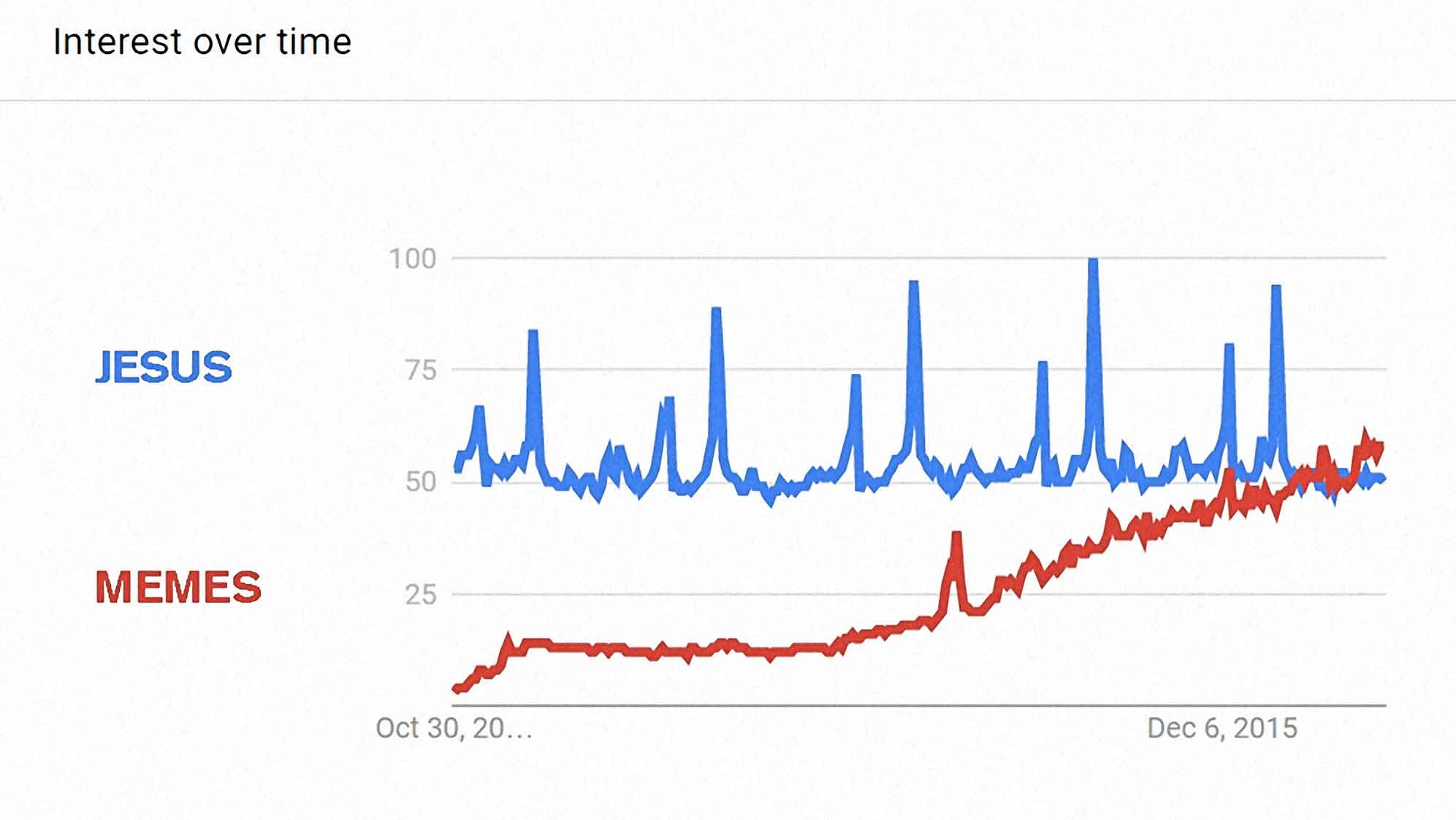
According to Google Trends, the search term "memes" is now more popular than the search term "Jesus," a fact noticed by Dominik Vincent Salonen, @Kuwaddo on Twitter.
https://twitter.com/Kuwaddo/status/790912204237332480
wskentstart your week here pls
wskentthese are beautiful photos. please note the caption for the last one.


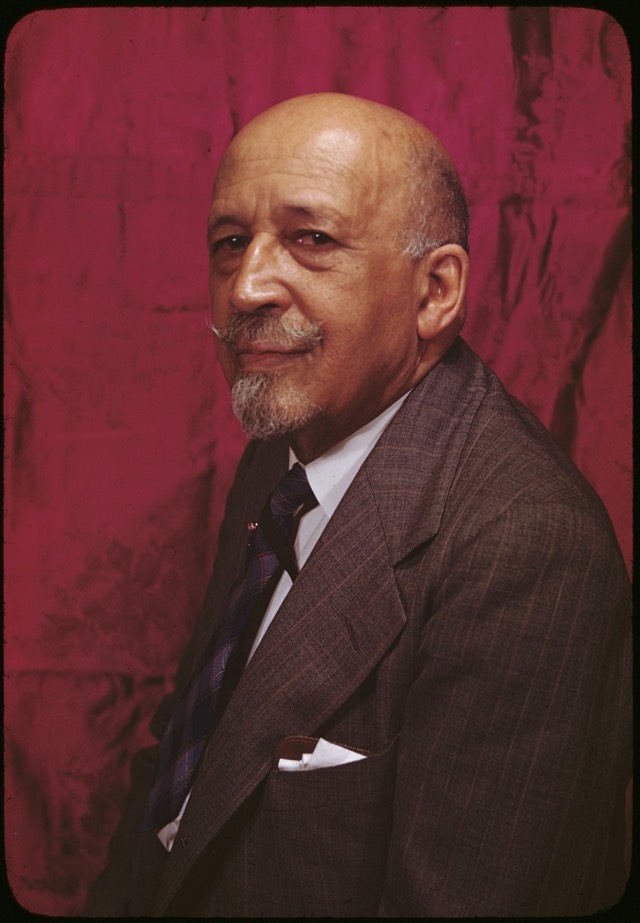
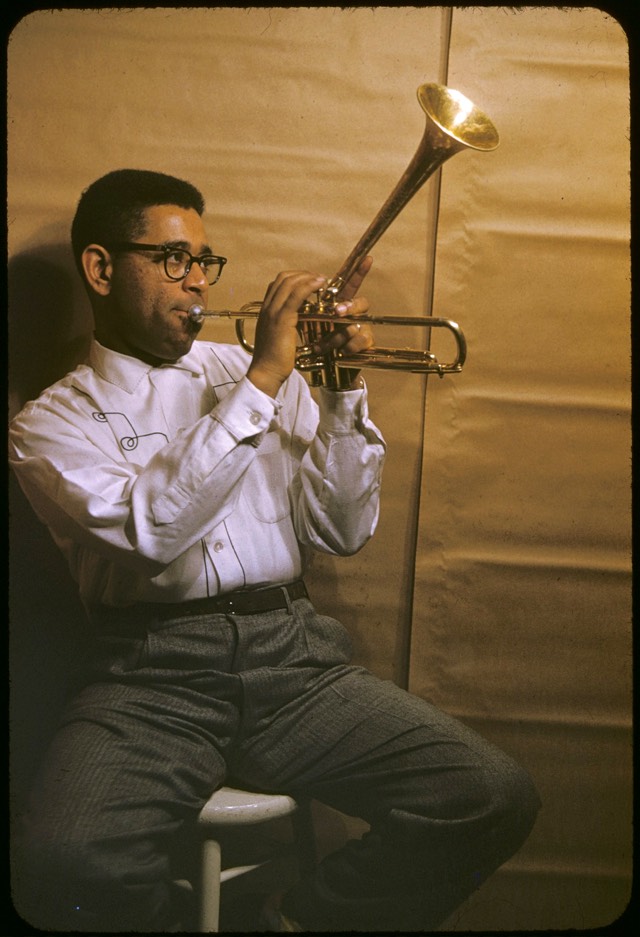

Carl Van Vechten moved to New York in the early 20th century and became “violently interested in Negroes”. As part of that interest, Van Vechten got to know many of the leading black figures in the city and photographed them, first in black & white but later in vibrant Kodachrome. Almost 2000 of his color photos are available at Yale’s Beinecke Library (direct search). Pictured above are Van Vechten’s photos of Ella Fitzgerald, Eartha Kitt, W.E.B. DuBois, Dizzy Gillespie, and a young James Earl Jones. (via the new yorker)
Tags: Carl Van Vechten Dizzy Gillespie Eartha Kitt Ella Fitzgerald James Earl Jones NYC photography W.E.B. DuBoiswskentOMG HOW DID ANYTHING EVER GET DONE?! this is so beautiful/well done. i love the image, the sound, the feel, the tone. it's a long one, but worth every second.
wskentthis is some damn fine city lore.
wskentoh, he is SO good. SO good.
As a chaser to the last post, here’s Hillary Clinton’s latest campaign commercial. This is right up there with the best political ads I’ve seen. Obama’s words are taken from his speech to the Congressional Black Caucus last month.
Tags: 2016 election advertising Barack Obama Hillary Clinton politics videoOur work’s not done. But if we are going to advance the cause of justice, and equality, and prosperity, and freedom, then we also have to acknowledge that even if we eliminated every restriction on voters, we would still have one of the lowest voting rates among free peoples. That’s not good, that is on us.
And I am reminded of all those folks who had to count bubbles in a bar of soap, beaten trying to register voters in Mississippi. Risked everything so that they could pull that lever. So, if I hear anybody saying their vote does not matter, that it doesn’t matter who we elect, read up on your history. It matters. We’ve got to get people to vote.
In fact, if you want to give Michelle and me a good sendoff, and that was a beautiful video, but don’t just watch us walk off into the sunset now, get people registered to vote. If you care about our legacy, realize everything we stand for is at stake, on the progress we have made is at stake in this election.
My name may not be on the ballot, but our progress is on the ballot. Tolerance is on the ballot. Democracy is on the ballot. Justice is on the ballot. Good schools are on the ballot. Ending mass incarceration, that’s on the ballot right now.
wskentthis is really charming. slow burn. worth it.
Born to be Mild is a short documentary about The Dull Men’s Club, an online community of men wishing to escape the hurly-burly of everyday life and just be ordinary.
Whether you’re crazy for roundabouts, addicted to photographing mailboxes, have the world’s largest collection of British milk bottles, or you’re a dull man with pretty much any sort of hobby that induces bafflement and yawns in friends and acquaintances, there’s a club just for you. A drolly cheerful celebration of the very ordinary, Born to be Mild explores the uncommon hobbies practiced by the members of the Dull Men’s Club — an online community that connects ‘dull men, and women who appreciate dull men’.
The group’s “greatest accomplishment”, listed on their about page, is:
Remaining dull in spite of the ever-increasing pressures from advertising, the media, and elsewhere to change.
In a recent piece in the NY Times Magazine, Nicholson Baker wrote about dullness:
That’s the extremely interesting thing: Everything is interesting. Potentially. Sometimes it may not seem so. You may think a certain thing is completely without interest. You may think, or I may think, eh, dull, boring, heck with it, let’s move on. But there is someone on this planet who can find something interesting in that particular thing. And it’s often good to try. You have to poke at a thing, sometimes, and find out where it squeaks. Any seemingly dull thing is made up of subsidiary things. It’s a composite — of smaller events or decisions. Or of atoms and molecules and prejudices and hunches that are fireflying around in unexpected and impossible trajectories. Everything is interesting because everything is not what it is, but is something on the way to being something else. Everything has a history and a secret stash of fascination.
The Dull Men’s Club actually seems to be the Odd Objects Collector’s Club. I could get into milk bottles and roundabouts. What about the truly dull, who don’t collect anything and just watch the news on TV all day?
Tags: Nicholson Baker videowskentcounter culture standards.
NB: crotch skull.
wskentwitch.
Steve Wiles is a band director from Oklahoma who is a extremely talented whistler. Wiles can whistle two melodies at the same time.
Competitive whistler Christopher Ullman is pretty good too — he doesn’t kiss before competitions and his best friend is a tube of Chapstick.
When Roger Whittaker whistles, he sounds like a damn bird! Pavarotti was also not too shabby a whistler.
Tags: audio Christopher Ullman Luciano Pavarotti music Roger Whittaker Steve Wiles videowskenti like the idea. the images, on the other hand, look like some terrible dystopian sci-fi city.

Border City is being designed as a bridge between nations, a novel approach to creating international unity at a time when some politicians call for building walls. Proposed by architect Fernando Romero of the firm FR-EE at the London Design Biennale, this visionary project is to be developed along a region of border covering parts of Texas, New Mexico and Chihuahua.
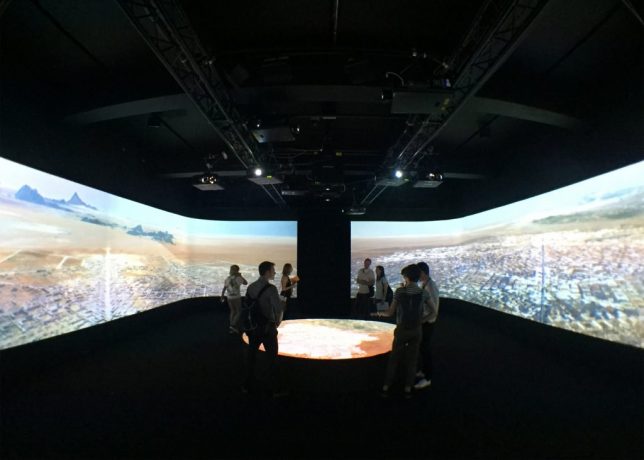
The plan is centered around an extant border crossing and aligned with other crossings in the area as well. It may sound far-fetched, but Romero is already negotiating with private land owners in the region as well as developers and investors. He hopes to make the city a reality within a decade.

Romero believes our existing concept of borders is “primitive” and sees and urgent need to move past binary understandings of such divides. Already, many global centers of economic activity are centered not around cities but rather clusters of metropolitan areas, often along national borders.

“This is a long-term vision, a vision that is not about building walls but about thinking more ambitiously about the mutual relationship [between two countries] and about what borders really mean between countries” said the architect. It is also a reflection of current reality, where there already “exists a very strong mutual dependency of economies and trades.”

The urban plan consists of interconnected hexagonal-shaped grids, each with their own center and linked to existing transportation corridors and border crossings. If his proposal is fully realized, the city could even become a special economic zone (see also: Hong Kong and Andorra) that would enjoy semi-independent governance.

Even without that kind of designation and semi-autonomy, however, there would still be big benefits to residents and businesses in terms of easy access between countries due to optimized transit and city planning. Many “twinned” border cities along the Rio Grande have already benefited from close ties despite extant borders, despite the lack of centralized and ground-up plans to optimize connectivity.

“What you’re seeing here is the first binational city to be designed from zero between the United States and Mexico,” said Romero. “This is one of the most active borders in the world in terms of commerce and traffic of goods but also in terms of human activity and employment.”
Imagine a city in motion, where not a single building is anchored to the ground, with hotels, event halls and other structures all on rails and movable at will. That's the vision behind 'A ...
Nearly two decades ago even short trips across Europe could involve multiple stations, guards, lines and stamps, but the open-border policies in effect today have transformed many of these ...
Modular thinking is brilliant and infectious, expanding and spreading from industrial-revolution technologies to three-dimensional printing and beyond. But how big can modularity get? Imagine the ...




wskentmainers with knives.

"Minnie Thomas, 9 years old, showing average size of sardine knife used in cutting. Some of the children used a knife as large as this. Minnie works regularly in Seacoast Canning Co., Factory #7, mostly in the packing room, and when very busy works nights. Cuts some, also cartons. She says she earns $2.00 some days, packing."
Image: Library of Congress
In 1908, New York sociologist and photographer Lewis Hine was hired by the National Child Labor Committee to document the exploitation and working conditions of underage laborers around the United States
Hine crisscrossed the country, skirting around watchful employers to photograph and interview thousands of children in different industries and settings, from rural miners to urban bike messengers and newsies. Read more...
More about Fish, Children, Child Labor, Maine, and Historywskenti love.

Untitled, 1952, Chicago. Mildred Meade
wskentdicks out.

LOS ANGELES — Relativity CEO Ryan Kavanaugh isn't shy on Twitter, where he tends to make brash proclamations, but hey, that's why we like the guy. He also apparently understands the undying power of Harambe on the internet.
Perhaps that's why one of his tweets from last week has garnered nearly a quarter-million retweets, already inching its way up Twitter's most-retweeted list — and toward a possible movie about the late lowlands silverback gorilla.
On Sept. 15, Kavanaugh tweeted "1,000,000 retweets and I'll make a Harambe movie." Apparently, a lot of people want to see a Harambe movie, because 225,000 retweets and counting (even more than his 155,000 follower count) is astounding by any measurement. Read more...
More about Kanye West, Obama, One Direction, Twitter, and Relativity